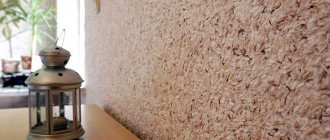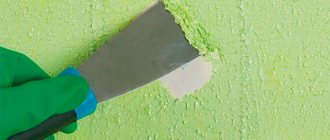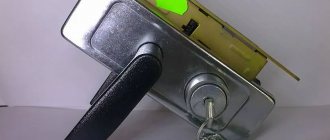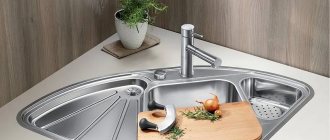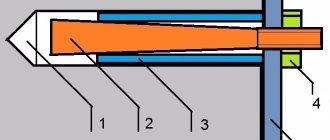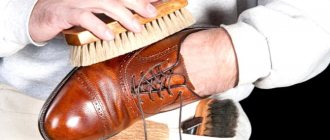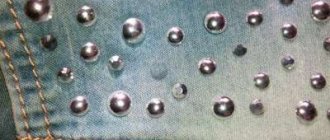Before finishing or cladding begins, the wall must be cleaned of dust, dirt, construction debris, and then leveled. Before plastering or covering the surface, you need to get rid of uneven surfaces. These include nails and screws.
The hardest thing to get is the dowels. Fasteners for different types of surfaces have increased rigidity. Removing them if you lack experience can be difficult. It will not be possible to carry out the procedure without additional tools. You will have to use construction equipment. Depending on the type of fastener that needs to be removed, you will have to use different methods.
Stuck anchor
How to remove an anchor
What is usually inserted into the anchor is not a screw or bolt, but a pin (the same bolt, only without a head) or a hook.
A bolt is screwed into the frame anchors, at the lower end of which the expansion element is held using a thread. In general, the anchor is pulled out using pliers:
- Remove the nut.
- Hit the pin with a hammer and push it deep into the hole.
- Grab the sleeve with pliers and remove.
Frame anchor:
- Unscrew the bolt.
- Use pliers or pliers to remove the anchor bushing.
- Insert the bolt into the vacated hole and turn clockwise to fit the wedge onto the bolt.
- Remove both elements.
If the bolt is rusty
If you cannot remove the bolt because it has oxidized, you should try to revive it. To do this, the parts are well moistened with a rust converter, kerosene or WD-40. Leave for the time indicated on the package or longer (up to half a day). During this time, the oxides should go away. After cleaning the bolt, you need to try to remove the nut or unscrew the bolt.
If the bolt is broken or its spline is torn off
If you tighten a bolt, screw or screw too quickly or with the wrong screwdriver, it is easy to tear off its grooves. Less often, it happens that the head is torn off completely or partially - in particular, in an unsuccessful attempt to pull out the frame anchor without removing the conical “anchor”.
To unscrew a broken self-tapping screw or bolt, it is drilled out and a chopper (extractor: a wedge-shaped screw with a left-hand thread) fixed in a drill, screwdriver or pliers is driven into it. Then the entire structure is rotated counterclockwise.
If the sleeve is installed incorrectly
The most common problem with anchor dowels is that they cannot be hooked onto the edge with pliers or even narrow-nose pliers. To avoid this, it is enough to install the anchor correctly: leaving at least 2 mm above the wall level. This length is enough to pick up the sleeve, but it is easily covered with plaster or any profile.
What to do if it is impossible to hook the sleeve:
- Screw the self-tapping screw between the sleeve and the stud and pull it out, if possible, grabbing the stud as well.
- Remove or push the pin/bolt, drive a self-tapping screw or other tool between the wall and the sleeve, tearing and bending the edge of the anchor. After this, pull the resulting corner of the metal.
- Drill out the top layer of the wall around the dowel to release the edge of the sleeve.
As a last resort, the anchor is cut with a circular saw and its parts are removed separately.
As a rule, metal dowels and anchors are installed where their dismantling is not required, but the load will be significant. In some cases, it makes sense not to pull out the sleeve, but to drive it deeper and cover it with cement or other mortar or a plastic / wooden block. In any case, there are no unsolvable problems: the dowel or anchor is almost always removed, it’s worth applying patience and effort.
Video: Types and purpose of dowels
Securing medium weight items
Fixing objects of average weight is performed using impact-type dowels. In this case, the transverse dimensions of the dowels, as well as the corresponding drills, must be at least 8 mm. The dowel chosen for these purposes must go into the wall to a depth of at least 6 cm, and when attached to the ceiling surface - to a depth of 8 cm. To securely fasten an object of average weight (up to 10 kg) to the wall or ceiling, you must use 4 dowels at the same time.
It is convenient to hang medium-weight objects on quick-installation dowels if the design allows the use of through fastening
Plastic dowels
To get a plastic dowel, you may need certain tools and skills. But often the removal of such fastenings is easy and quick. Plastic dowels can be made of nylon, plastic, or other elastic materials. They are produced with different profiles, any depth of studs, and can be made with mustaches that fix the sleeve in the monolith.
Basic methods for removing plastic dowels:
Hammering into the wall - if the dowel sticks out a lot and it is not possible to pull it out, the element can be hammered in. To do this you will need a hammer and a core, putty and a spatula. The core is placed on the protruding fastener, knocked with a hammer, and the hole is then sealed with putty.
- Removing the dowel using pliers or wire cutters - to do this, you need to secure the tool to the plastic element, and then carefully pull with force and at the same time loosen it.
- Melting with a soldering iron - there is also a method for removing the dowel. Suitable for cases where the plastic element is broken. It is melted with a soldering iron, then removed or hammered into the wall monolith.
- Using a metal tube - find a pipe of suitable size, stuff it onto a plastic rod and simply remove it.
- Screwing in a suitable self-tapping screw 2/3 of the length of the dowel, then sharply pulling it out.
- Using a drill and a drill, the length is equal to the dowel - several holes are made around the element with a drill, then the loose rod is picked up with wire cutters/pliers and all that remains is to easily remove it.
If you plan to remove a plastic dowel from aerated concrete, you need to dismantle it more carefully, since the monolith is very fragile and capricious, the fastenings for it are equipped with special blades running in a spiral
You need to work with such a dowel carefully.. https://www.youtube.com/embed/AtDOM9EvS7E
Trying traditional methods
Ask your father or grandfather how to secure a dowel in a loose foundation. You'll probably get a lot of good advice. We have collected some of the most popular ones that people have been using since Soviet times. After all, back then there was not such a wide selection of fasteners, and any means were good for home repairs.
Wooden cork
Helps strengthen the dowel in a large hole. Take a cork or a small piece of wood and cut several thin strips the length of the fastener. Place two to three strips into the hole and then drive in the dowel. Wooden seals will hold it in the material. By the way, sometimes a match is used for this purpose. Only it is inserted inside the plastic element, and not into the hole itself - it acts for wedging.
How to remove a dowel from a wooden material?
On the modern market, dowels made of plastic are mainly used; they are reliable and durable, have a long service life, but instead of them, wooden elements are sometimes used, they are also called chopiks.
The wooden dowel is removed using almost the same method as a plastic object. That is, a self-tapping screw is screwed into it, which is pulled out using a nail puller or pliers.
Inside the wall, you can pick at wooden material that has fallen apart and then pull it out. Cleaving is performed with a hammer and chisel, and then fragments and large parts are removed with a screwdriver.
The chop can be removed using a drill or hammer drill by drilling. But the work must be done with special care so as not to greatly enlarge the holes in the wall. Typically, wooden dowel nails are used when installing wooden windows. To secure a wooden window sill to concrete, you will need about four of these elements. Dowels are removed when planning to replace them with plastic windows. In this case, dowels are made of plastic, as they are more reliable for this material.
What to do to get a chopik
Wooden fasteners are rarely used. However, before the mass appearance of plastic dowels on the market, chopiki were used everywhere. Therefore, when renovating an old apartment, you can find several such elements in the walls.
There are no significant differences in dismantling plastic and wooden dowels. You can try to screw in the self-tapping screw, then remove it with pliers, pliers, or another tool.
You can crumble it into several fragments and remove them from the hole in the wall. This is easy to do with a chisel and hammer. Divide it into several parts along the grain of the wood. After this, you can remove them from the crack in the wall with a knife or screwdriver.
You can drill it out. However, this depends on the strength of the chopik. For example, a chopper made of oak is difficult to drill. There will be no problems with a powerful hammer drill. However, it is not advisable to exert too much effort when working. You can significantly damage the walls; you will have to do plastering, priming and putty. The whole process will significantly prolong the repair.
If the cap breaks off, how to get it
In the case where the cap is broken off and the main part is in the wall, you don’t have to remove the dowel. They drive him deeper. You need to take a thin, blunt object and hammer a dowel into the wall. Putty the place.
You can remove a broken item using a drill. To do this, make 3-4 holes around the nest, close to the dowel. It loosens and can be easily removed with pliers. The holes made are filled with putty.
When filling, a mesh is used to prevent cracks from appearing.
It is not necessary to remove the protruding interfering object from the wall. It can be cut off and hammered deeper. You just have to remember that metal objects give rust stains. If you need to remove the dowel from the wall, use self-tapping screws, drills, a corkscrew, and a hammer.
Retrieving an item from the wall is not difficult, you just need to spend a little time and patience. And also have a good hammer and pliers on hand, or a nail puller. After removal, it is advisable to cover the holes that appear with reinforcing mesh and putty.
Features of dismantling dowel-nails
Dismantling dowel-nails has its own characteristics. Which?
The need to dismantle dowel-nails usually arises when carrying out renovation work indoors. Unnecessary dowel-nails interfere with the alignment of the walls (and this is a necessary step in preparing them for subsequent painting or wallpapering).
When carrying out internal construction and installation work, 2 types of dowel-nails are used:
- with plastic base
- with metal base
Let's consider the features of dismantling each type of dowels.
Removing the plastic dowel-nail
- Screw a screw of the required size into the dowel (it is necessary to ensure reliable coupling of the working part of the screw and the fastener).
- Using pliers (or, in case of difficulty, a nail puller), carefully remove the self-tapping screw and dowel from the wall.
Dismantling a metal dowel-nail
It is believed that metal dowel nails are not intended for fastening dismountable joints. But if you need to remove a metal dowel-nail from the wall, proceed as follows:
- Hit the protruding part of the dowel and nail with a hammer from different sides, thereby loosening the fastener.
- Having felt that the part already has a rather weak adhesion to the concrete, use a nail puller to remove the dowel-nail from the wall.
Method 3
(suitable in cases where the dowel-nail does not protrude from the wall)
- Using a hammer/electric drill with a special drill bit, make several holes around the fastener (this will improve access to the dowel nail).
- Remove the dowel-nail from the wall with a nail puller.
Thus, the peculiarities of dismantling dowel-nails are the need to use a large number of tools and high energy consumption
(in the case when it is necessary to install a permanent connection).
Therefore, when preparing for construction and installation work, you should think in advance what type of connection you need - collapsible or non-demountable. For dismountable fastening, you should choose a dowel-nail with circular notches (dismantling of which is carried out by unscrewing it with a screwdriver).
Buying construction and installation equipment and consumables for construction at the Hephaestus™ retail store is a reasonable decision, and here’s why:
Firstly,
We offer you
a wide range of mounting guns, components and consumables.
Secondly,
Our products are characterized by
an excellent price-quality ratio.
Third,
If you have questions about the selection of construction and installation equipment and the necessary cartridges, dowels and nails, our highly qualified specialists
will answer all your questions!
Hephaestus™ will be happy to fulfill your order!
When is it necessary to re-attach the dowel?
Often, the fasteners in the wall dangle, even if a drill of a suitable size is used for the hole. Because of this, the self-tapping screw or screw rotates along with the dowel. In this case, it is better to take a drill of a smaller diameter. For example, for an 8 mm screw. you need to make a recess with a diameter of 6 mm. When driven in, the fastener will fit tightly inside and will not rotate.
Fasteners that are too short fall out under heavy load. For example, a mount 3 cm long will not support a massive hanging cabinet. If it doesn't fall out right away, it will do so over time. The problem is solved by replacing it with a longer mount. To prevent shelves and cabinets from falling, secure the falling dowel in a soft wall during installation.
Pliers are a handy tool!
One of the most convenient tools for removing nails is pliers. It is best to have medium to small sized pliers. To reduce the effort needed to remove nails, it is recommended to purchase pliers with a long handle and wide jaws.
If your pliers have small handles, it is not recommended to lengthen them using a tube. This may cause injury!
If you decide to pull out a long nail, then you cannot do without intercepting it. Intercepting with pliers will be required when the rod extends 1 centimeter. Use pliers to grab the nail at the base of the workpiece. In this case, effort will be required, since the rod is smooth. To simplify this process, place a board under the supporting surface of the pliers. This method will allow you to remove nails from boards.
When using this method, be careful, especially when you plan to reuse the nail. If you pull out a nail with an overhang and pull it exclusively in one direction, you run the risk of pulling out a rainbow-shaped nail. To straighten it, you will need to straighten it; as a rule, this process is quite painstaking and time-consuming. Moreover, it will be extremely difficult to align perfectly. To prevent excessive bending, move the nail in different directions as you pull it out.
To avoid damaging the surface of the workpiece when removing the nail with pliers or other improvised tools, it is wise to use a special backing. If the surface is varnished, then you can place leather or other soft material under the board.
How to remove a dowel from plastic?
In some cases, the nail is removed, and the plastic itself remains inside the wall, and several methods can be used to remove the element.
- The most suitable way to remove an object from the wall is to use a suitable self-tapping screw; it must match the size of the dowel. It is screwed 2/3 into the plastic element, and then pulled out with pliers or another suitable tool. If you don't have a self-tapping screw, you can use a regular corkscrew, screw it into the wall, and pull out the dowel.
- If the previous method does not help to cope with the problem, then several holes are made around the object stuck in the wall, while the distance from it should be minimal. Then they try to pull out the element, but the hole increases significantly, this must be taken into account immediately.
- If you can't remove the plastic dowel. It can also be driven inside, but this will not be easy. The dowel head can be cut off with a knife, and then the element can be driven in as deeply as possible with a hammer, and the hole can be filled with putty.
- You can also try drilling out the dowel using a drill. The drill should be the same or slightly larger diameter than the dowel itself. After the procedure. The hole is covered with putty mixture.
How to hammer a nail into a concrete wall?
It is necessary to follow a certain algorithm of actions, and also have the necessary tools at hand:
- when working with classic dowel-nails - a punch for marking, a hammer + an impact drill or a hammer drill;
- pneumatic gun - when using appropriate wedge-shaped products.
When planning fastening using the first method, the sequence of actions should be as follows:
- the optimal location for installation is selected;
- using a hammer or center punch, a mark is made;
- a hole of the required depth is drilled using a drill or hammer drill (the marking of the drill/drill must match the diameter of the fastener);
- debris is removed from the surface;
- the nail is driven into the hole with a hammer until it stops.
The use of a pneumatic gun allows fastening without prior preparation. That is, it is enough to attach the tool to the desired place and fire a shot with a loaded dowel by pressing the trigger. The rod will enter the surface, and the washer will move up to the cap, thereby causing a tighter and more reliable fit.
What to do if you don’t have a drill (hammer hammer, pneumatic gun)?
An impact drill and a concrete construction gun are expensive things and not every person has them. If these devices are not available, the following may be used:
- bolt;
- pobedit drill;
- punch (beard);
- steel rod.
Initially, you have to decide on the size of the future hole and the object that will become an alternative to the drill/drill. If the diameter is less than 15 mm, then the ideal tool will be a bolt - a metal tube with teeth at the end. You will need to place it in the intended place and hit it with a hammer, turning it 1/3 of a turn after every 2-3 blows. Periodically, concrete crumbs need to be shaken out.
When working with concrete, it is possible to replace not only the tools, but also the dowels with ordinary nails. In such a situation, a wooden plug (cork) must first be driven into the formed recess.
Sequence of removing dowels, basic rules for each method
To remove a dowel from a concrete wall, you need to follow a sequence of actions; if you follow all the rules, you can achieve an ideal result, and the surface will remain unharmed.
- To remove the plastic base for the fastening element, select a self-tapping screw, which is screwed inward and pulled out with pliers. If you don’t have such a tool at hand, you can use a nail puller. When tearing out, it is necessary to take into account that some sections of the wall may be damaged, so the work is carried out carefully.
- A nail puller helps to remove even fasteners that are tightly held inside the concrete. Pressure is applied to the lever, due to which the fastener is removed from inside the concrete surface. The head of the self-tapping screw must be securely fixed to the end of the tool, otherwise if it slips, you can damage the surface of the wall or harm yourself.
- You can remove a wooden dowel with an awl or a knife, but you must first break it and then remove it in parts. When installing new plastic windows, such elements will not reliably fasten them, so high-quality cleaning of the holes will be required.
- The nail fragment remaining inside the concrete wall is pulled out by heating the plastic element with a blowtorch. In this case, the concrete wall is not damaged, but the work is carried out with particular speed, otherwise the plastic will harden and you will have to do everything again.
- Metal dowels are fixed to the wall with a special gun, so they are not easily removed. They need to be loosened for a long time, hitting with a hammer so as not to damage the surface of the wall, it should not break off. After this, you can also use a nail puller; pliers will not cope with this type of task. If this method turns out to be ineffective, then holes are drilled near the element and then removed. If pulling out is unsuccessful, the protruding part can be cut off with a grinder, and the hole can be filled with putty.
If pulling out the dowel takes a lot of time and effort, or all of the above methods are not effective, then you can leave the element inside and cut off its protruding part with a sharp object. The metal element is cut off with a grinder, the rest of the dowel is driven as deep as possible into the wall. Then the surface is leveled using putty material.
Sequencing
To remove a stuck dowel, you need to have certain tools with you and use them correctly. The following will be useful for work:
- screw of the required size or corkscrew;
- hammer or punch;
- pliers, wire cutters or nail puller;
- a fairly sharp knife and chisel;
- soldering iron;
- Bulgarian.
To remove a wooden dowel you need:
- Using a self-tapping screw, try to screw it into a wooden product, which will help remove the entire structure;
- another option is to split the product into smaller pieces, which may require a hammer, knife or chisel;
- remove those fragments that have broken off and do not sit tightly in the surface;
- due to the absence of some elements, it will be easier to loosen the remaining wooden dowels and remove them completely.
After the wall is cleared of wood chips, you can putty it and completely level it.
To remove a plastic dowel from the wall, you need:
- select a self-tapping screw that matches the dimensions of the dowel and screw it in so as to capture part of this part;
- if you don’t have a self-tapping screw at hand, you can try to take a corkscrew and screw it into a plastic part using the same principle;
- once the object is captured, you can gently pull it towards you;
- if the product does not fit and sits tightly, you can widen the hole near the dowel so that it can be loosened and moved from place.
If it was not possible to remove the plastic part, or the self-tapping screw broke during removal, you can try to drive everything into the wall to putty the surface, leveling it.
To work with metal dowels, you should use other measures:
- if the edge protrudes from the wall, you can hit it from different sides with a hammer to loosen the entire structure, which will help make it easier to get out;
- if the surface is too strong , and it was not possible to move the metal part, you can drill several holes near it and repeat the first procedure;
- If both options do not work , then you need to cut off the edge of the dowel using a grinder and putty this area.
If, during the process of driving in the dowel, part of it breaks off and the base remains inside, there is no point in removing it; it is much easier to drive this part deeper and use another element.
When leaving metal parts in the wall, it is important to remember that over time they can rust on the surface, so you should take care to bury the unnecessary item as deeply as possible.
Pulling algorithm
A protruding nail disrupts the aesthetic appearance, so it must be removed or hidden. When removing old fasteners from the wall, your wits and ability to use power tools will come in handy.
- The element that rises above the surface can be removed by rocking and unscrewing it. Loosen it with a hammer, hitting it on the protruding part from different sides. Then you should grab it with pliers or wire cutters and pull it out. It will not be possible to get it out if you pull it out of the hole using only translational force. If the fasteners are of significant size, it is advisable to use a nail puller, which will help remove them with less effort.
- Much more patience is required when it is necessary to remove a broken dowel if it is difficult or impossible to grasp or hook. The plastic case must be heated and melted with a hot soldering iron. This allows you to remove it from the wall using pliers or other similar tools.
- A metal tube, the diameter and length of which should be slightly larger than the fastener, often helps to get it out. It is driven in so that the bushing is inside. Then, at the same time, the nail should be pulled out.
- In the most hopeless situations, the dowel is removed with a hammer and drill. Using a drill of the required size, make several holes (recesses) directly around the socket. As a result, the strength of the nearby part of the wall decreases. The element can be easily removed with a suitable tool (pliers, wire cutters, etc.), then the surface is leveled with putty or plaster.
It is often necessary to remove the remaining plastic casing in the wall without a metal rod. Experts advise doing this:
select the appropriate self-tapping screw of the required size for the sleeve (about the types of screws for concrete), screw in three-quarters of the length, then loosen and remove; use a hand corkscrew to remove the dowel, carefully unscrewing it; if you can’t pull it out using the methods listed above, you should try cutting off the protruding parts with a knife, and hammer the rest into the wall; drill out the plastic bushing, selecting a tool of equal or larger diameter.
Before carrying out work, builders recommend assessing their feasibility. It is really necessary to think about pulling it out if you need to make a new hole nearby. For example, if you need to hang a new cornice in the same place, but the old fasteners do not fit.
The resulting depression, after you manage to remove the nail, will become large and will have to be sealed. To do this, you need to fill it with putty or plaster, apply a paint mesh, clean it, and level the surface with sandpaper after drying.
What to do if a dowel falls out of the wall?
The condition of the concrete does not always correspond to the required level, since low-quality mortar was used during construction. Interior partitions and window openings are made of material that, after decades, has become loose and free-flowing. In houses like this, nails fall out.
There are several ways to solve this problem:
- Drill a hole in the concrete, remove particles, fill it with liquid nails or epoxy glue. After thickening, install the dowel. Items can be hung after ensuring final curing.
- Screw a layer of electrical tape in the direction of the thread (ordinary cellophane will do), the resulting thickness should ensure a tight fit into the hole. Then drive the element into the plastic case, due to this it will expand, which will increase reliability.
- Wrap the dowel with a damp bandage (just wet it enough) until the required diameter is obtained and install it in the walls; you can immediately drive a nail. Use the fasteners for their intended purpose after the liquid has completely evaporated.
The main thing is to adhere to the rules that ensure reliability and durability during operation: make additional reinforcement, select an element with dimensions larger than usual.
| Articles |
Quite often, when performing various types of repair work, you can stumble upon certain difficulties. It happens that a seemingly simple and understandable procedure causes a lot of problems. So, for example, not everyone can answer the question of how to pull a dowel out of a wall without preparation. The thing is that the design of this fastening element is precisely aimed at holding it firmly in the wall and preventing easy removal. However, there is a way out of the situation, and even more than one, which will be discussed further.
Nail extraction technology
To remove nails today you can use a variety of tools, for example:
- nail puller,
- ticks,
- pliers,
- hammer with a forked nose, etc.
But despite the fact that there are a large number of tools, in order to pull out a nail, you will need ingenuity and the ability to use one or another tool.
For successful work, you need to expose the nail head. In some cases, when the nail is exposed, it can be straightened and knocked out from the back. This can be done using a hammer and another nail. Using another nail
To make the nail move easier, the protruding part can be lightly lubricated with water, soap or grease. This lubricant will allow you to quickly remove the nail. It will be especially effective when the nail is rusty. In some cases, when pulling out a nail, part of it may break. Then, using another nail, you need to hit its end, which is located in the material. This action will allow you to raise the cap. For this purpose, you can use a rod or chisel of suitable diameter.
It is not always possible to get close to the tip of the nail. In most cases, it is located in the thickness of the workpiece. For this reason, it is necessary to pull the nail only by the head. For this, a chisel or a screwdriver that has a rod passing through the entire handle is suitable. Such a screwdriver will not break when hit with a hammer. As a result, a kind of mini-nail puller made from a screwdriver will help you remove the nail by the head. This screwdriver should have a forked blade, which, when bent in relation to the rod, will allow you to quickly get the job done.
Homemade nail puller from a screwdriver
But the head of the nail is not always accessible. In some cases it is recessed into the workpiece. In such cases, a different technique is used to pull out the nail. Make a small indentation around the head using a chisel. The recess should be sufficient to allow the nail to be caught with pliers. If you still fail to catch on to the cap, then it is best to cut it off and remove the old nail to the opposite side. To do this, you need to knock out a nail, as described above.
Let's work with wood
Today, most people use plastic dowels, but some prefer wooden dowels. The difference in their extraction is not particularly large. The cap can also be pulled out using a self-tapping screw, which is screwed into a wooden product, then the removal process is carried out using pliers. If you don't have them at hand, a nail puller or other construction tool will do.
Another method that is especially popular is pulling it out in parts. To do this, you will need a chisel and a hammer, with the help of which the dowel is divided along the fiber. Then the resulting fragments are removed with a knife or screwdriver. You can also use a drill. This option is provided for dowels made of soft wood. The drill can be replaced with a hammer drill
It is necessary to carry out the procedure carefully to avoid large-diameter holes in the wall
In most cases, wooden dowels are used for installing wooden windows. To do this, take 3-4 fasteners with which to fix the window sill, and several pieces for installing the window frame.
Metal dowels are not as widespread as plastic ones, because their use implies the presence of special equipment. There are two options for removing such fasteners.
One way is twisting. The second is loosening with a hammer. If you can’t carefully unscrew the dowel, you can try to loosen it with a hammer. When the fastener is flush with the wall, it can be removed; to do this, you will need to make several small holes located around it. Then the actual extraction occurs.
Removing a dowel from a concrete surface is not an easy task, but using the right method, you can quickly remove the fastener with minimal loss to the surface. To complete the procedure in the shortest possible time, you only need to prepare the necessary tools and choose the right extraction method.
How to quickly remove a dowel from a concrete wall? updated: November 11, 2016 by: Artyom
Few people know how to properly remove an old dowel from a wall. The main thing is to try to choose a simple, reliable and economical method. Skills in installing and dismantling fasteners will help you achieve results; experience in using electric and hand tools will come in handy.
Several types are available specifically for concrete; they always use a nail as a rod. Reliable operation can be guaranteed if you are able to choose the right version based on the dimensions of the plane and the massiveness of the suspended structures, and perform high-quality installation.
Before starting work, you need to evaluate the quality and thickness of the surface. The presence of hidden electrical wiring and metal fittings is the basis for changing the location. Sometimes it is not easy to hammer in a dowel carefully without damaging the adjacent part of the wall.
The most commonly used options are:
- Expandable, suitable for solid walls. It will establish itself inside it due to the expansion of the plastic casing. The plastic bushing is made with a cone-shaped metal core or with a threaded thread.
- Universal. The built-in nail fits tightly to the walls of the hole. Suitable for loose, hollow partitions.
You can insert the dowel using a drill with a hammer or hammer function, a concrete drill, or a hammer. Correctly perform the work in the following sequence:
- using a hammer drill, punch a hole with a diameter similar to the bushing and a depth exceeding the length of the fastening element by 0.5 cm;
- clean the resulting recess from dirt and dust;
- fix the dowel body with a hammer until its edge aligns with the wall surface;
- hammer the nail into the body until it stops.
If you follow all the installation rules, it will be difficult to get it.
What building materials are suitable for repairing damage?
Today in any supermarket you can see materials for sealing cracks; they are designed to work with various types of surfaces. Both universal mixtures and special ones for external or internal use are sold.
Several of the most used types of putties from different manufacturers:
- Neomid Professional - for eliminating both street and internal damage. This putty is distinguished by its versatility, it is suitable for various materials. The content of reinforcing fibers allows you to work with deep and wide cracks.
- Semin Fibrelastic is a universal putty with increased elasticity, can be used both indoors and outdoors. Withstands significant loads when “breathing” cracks expand and contract, and does not lose its qualities due to changes in temperature and humidity.
- Profix - easy to apply and has plasticity and high adhesion to most materials from which walls are built. The mounting-putty mixture works great outdoors and is suitable for self-repair of small cracks; it can be applied textured.
- Unis Glare-thick-layer is a gypsum putty; manufacturers provide a 15-year guarantee on Unis seams. Used to correct internal defects.
You can prepare a mixture for sealing cracks yourself.
Cement-sand mortar is made at the rate of 3 parts sand to 1 part cement; for large or through gaps in the walls, crushed stone can be added, and for plasticity, add liquid soap in the amount of 30 g per 15 liters of concrete or silicate glue (1 liter per 15 liters of solution) , or PVA (100 g per 15 liters of mixture). The properties of the finished putty can be improved by adding fiber reinforcing fibers and ready-made plasticizers.
It is used for external cracks in brickwork, concrete, and aerated concrete. The advantage of this material can be considered its strength, and the disadvantage is its low elasticity, even in the presence of plasticizing additives; moreover, the finished solution cannot be stored for a long time.
There is no need to make silicone sealant yourself; it is sold ready-made in special tubes and is applied using a glue gun with a thin tip, which is convenient for filling cracks. The advantages of silicone are fast drying and high elasticity of the seam, moisture resistance. Disadvantages include the fragility and softness of the material. Silicone is used inside the home to repair small cracks.
Polyurethane foam is used to fill internal voids in cracked structures made of aerated concrete or aerated concrete; its advantage is lightness and excellent thermal insulation. The downside of polyurethane foam is its softness and lack of strength; an additional coating of plaster is required on top.
Removing metal-type dowels
Elements of a metallic type are used very rarely, since special equipment is required for fastening, so pulling out such dowels is also not easy. It cannot be broken by any tool or device; the element must be removed from the wall with special care.
If an object sticks out a little above the surface, it is loosened with a hammer; usually the dowel is fixed securely and firmly in the wall, so it will not be possible to simply remove it. For deeper immersion, several holes are made around the element, at a minimum distance from it, and removed using pliers or a nail puller.
Such methods are the most suitable for removing metal objects from the wall, after which all holes are filled with putty material flush with the surface.
Unusual methods of dismantling
To remove fasteners in difficult cases, you can use non-standard solutions.
How to remove a dowel from a wall if its metal fragment cannot be grasped with pliers? It can be electric welded to the bolt and unscrewed with a wrench. A non-removable dowel can be driven into a greater depth with a hammer drill and the old hole can be used again.
Pulling algorithm
A protruding nail disrupts the aesthetic appearance, so it must be removed or hidden. When removing old fasteners from the wall, your wits and ability to use power tools will come in handy.
- The element that rises above the surface can be removed by rocking and unscrewing it. Loosen it with a hammer, hitting it on the protruding part from different sides. Then you should grab it with pliers or wire cutters and pull it out. It will not be possible to get it out if you pull it out of the hole using only translational force. If the fasteners are of significant size, it is advisable to use a nail puller, which will help remove them with less effort.
- Much more patience is required when it is necessary to remove a broken dowel if it is difficult or impossible to grasp or hook. The plastic case must be heated and melted with a hot soldering iron. This allows you to remove it from the wall using pliers or other similar tools.
- A metal tube, the diameter and length of which should be slightly larger than the fastener, often helps to get it out. It is driven in so that the bushing is inside. Then, at the same time, the nail should be pulled out.
- In the most hopeless situations, the dowel is removed with a hammer and drill. Using a drill of the required size, make several holes (recesses) directly around the socket. As a result, the strength of the nearby part of the wall decreases. The element can be easily removed with a suitable tool (pliers, wire cutters, etc.), then the surface is leveled with putty or plaster.
It is often necessary to remove the remaining plastic casing in the wall without a metal rod. Experts advise doing this:
select the appropriate self-tapping screw of the required size for the sleeve (about the types of screws for concrete), screw in three-quarters of the length, then loosen and remove; use a hand corkscrew to remove the dowel, carefully unscrewing it; if you can’t pull it out using the methods listed above, you should try cutting off the protruding parts with a knife, and hammer the rest into the wall; drill out the plastic bushing, selecting a tool of equal or larger diameter.
Before carrying out work, builders recommend assessing their feasibility. It is really necessary to think about pulling it out if you need to make a new hole nearby. For example, if you need to hang a new cornice in the same place, but the old fasteners do not fit.
The resulting depression, after you manage to remove the nail, will become large and will have to be sealed. To do this, you need to fill it with putty or plaster, apply a paint mesh, clean it, and level the surface with sandpaper after drying.
What to do if a dowel falls out of the wall?
The condition of the concrete does not always correspond to the required level, since low-quality mortar was used during construction. Interior partitions and window openings are made of material that, after decades, has become loose and free-flowing. In houses like this, nails fall out.
There are several ways to solve this problem:
- Drill a hole in the concrete, remove particles, fill it with liquid nails or epoxy glue. After thickening, install the dowel. Items can be hung after ensuring final curing.
- Screw a layer of electrical tape in the direction of the thread (ordinary cellophane will do), the resulting thickness should ensure a tight fit into the hole. Then drive the element into the plastic case, due to this it will expand, which will increase reliability.
- Wrap the dowel with a damp bandage (just wet it enough) until the required diameter is obtained and install it in the walls; you can immediately drive a nail. Use the fasteners for their intended purpose after the liquid has completely evaporated.
The main thing is to adhere to the rules that ensure reliability and durability during operation: make additional reinforcement, select an element with dimensions larger than usual.
| Articles |
Before finishing the walls, the surface must be carefully leveled, all protruding elements, nails, screws and dowels must be removed.
Getting the last element is very difficult, it is important to know the basic rules of how to do this. It will not be possible to pull out the dowel by hand; in any case, you will have to resort to using tools
What method to pull out
Much depends on where the nail or dowel is driven in. This could be a concrete base, a layer of plaster or a plaster wall. It is advisable to remove it so as not to destroy the plaster layer and large cracks do not appear, and therefore choose the appropriate method. A variety of tools may be needed for dismantling, and which ones are most suitable depends on the method chosen.
The most accessible and simplest methods for removing stuck parts.
- You can pull out the protruding dowel using pliers by grabbing it along the edge. You should pull it in an even direction towards yourself and at the same time loosening it to the sides, smoothly and without sudden movements.
- Additionally, expand the passage using an electric drill, use a drill of the required length to make several holes along the stuck dowel, and remove it by loosening it on the sides using pliers.
- The protruding element can be driven deep into the wall. The core must be placed on top of the dowel and carefully hammered even deeper to the required depth.
- Application of metal pipe. You need to use a tube with a diameter equal to the dowel, carefully hammer it onto the rod and then pull it evenly towards you.
- You can get rid of a plastic object using a soldering iron. Use a soldering iron to heat and melt the plastic and then pull it out with simple wire cutters. It is practical when the cap or half of the body breaks off and the rod gets stuck inside.
Varieties of dowels often used by craftsmen.
Dismantling must be carried out carefully. If you jerk sharply with pliers, the edges may break off and then you will not be able to hook the object again, and if you drive the core or tube hard with a hammer, you can significantly destroy the wall at the edges. After removing the object, voids remain; they are covered with putty or plaster.
Metal dowel
Dowels or metal anchors are firmly fixed to the wall and removing them becomes difficult. To do this, you can use one of the above methods.
- If the object cannot be pulled out simply by pulling it with pliers, then first you need to widen the hole itself where it sits, with a hammer, chisel, screwdriver, or drilling holes along the edges of the sleeve, and after loosening it from the sides, pull it, grabbing it towards you with the pliers.
- If it was not possible to pull it out using any of the methods listed above, then the protruding object can be cut off with a grinder and hammered deeper. Metal objects on the walls can cause rust stains, which should be taken into account when choosing a finishing and pre-finishing coating.
Plastic rod
Plastic items are much easier to remove and this option offers many more options.
- You can screw in a self-tapping screw of a suitable size about 2/3 of the length and, using pliers, grab it by the hat and pull it towards you, shaking it to the sides; a similar procedure can be done using a regular corkscrew.
- It is practical to use a drill by making 2-4 holes in a circle, widening the entrance hole and then pulling out or simply cutting off the protruding part with a construction knife.
- You can choose a drill equal in diameter to the plastic dowel and drill it thoroughly; it will come out in the form of plastic shavings.
- If the object remains in the wall, it must be deepened, cut off or melted enough so that subsequently, after puttying, the plaster does not fall off from the dismantling site.
Wooden chop
A wooden dowel is easier to dismantle and is much easier to remove compared to plastic or metal models.
- Using a narrow screwdriver or a chisel and a hammer, you can crush the wooden chip inside and remove it in parts by picking it out with a screwdriver.
- Use a hammer drill or an electric drill to completely drill out, but if the item is made of hard wood, this procedure can take a long time.
- The easiest way is to tighten the self-tapping screw in the center to a certain depth and use pliers or another suitable tool to remove the object.
How to remove a dowel
To renovate an apartment or office, high-quality finishing is always required. Preparing premises for painting or wallpapering involves careful leveling of the walls, often associated with the need to dismantle old fasteners. During preparation, beginners often cannot figure out how to remove the dowel. Depending on the material of the dowel, there are some tricks that allow you to get rid of fasteners that have become unnecessary.
Tools
The list of tools required to pull out the dowel depends on the material from which it is made. During your work you may need:
- self-tapping screw or corkscrew,
- chisel, hammer,
- pliers,
- nail puller,
- knife or awl,
- soldering iron,
- "Bulgarian",
- punch or electric drill.
Such a small dowel and so many tools are needed to remove it from the wall! In fact, the above list applies to all types of dowels. Therefore, in the process of work, you will use exactly the tool that is necessary to pull out exactly those dowels that are firmly embedded in your walls or ceilings. Perhaps, let's move on to the process of removing the dowel itself.
Remove with pliers
And finally, a tool designed specifically for removing nails - pliers. This is the most convenient device for solving such a problem.
The tool has wide and thin “jaws” that can easily be used to pick up the deepest nail. Even the torn head of a nail should not scare you, because pliers, like wire cutters, have pointed ends that can be used to firmly grab the body of the nail anywhere. So, by gradually grasping the metal rod in a new position each time, you can pull it out of the wall with light rocking movements, with virtually no effort.
Which method should I choose?
In a situation where the fasteners remain in the wall along with the nail, everything is very simple. To do this, you will need to loosen it - strike the dowel-nail several times with a hammer from all sides. Next, you will need pliers to sharply pull it out of the concrete.
It is worth considering whether this operation will damage the top layer of plaster, which may be useful. If you cannot do without losses, then you can drive the dowel into the wall along with the nail. The procedure must be successful, because the depth of the hole is always greater than the length of the dowel itself. Afterwards this place is leveled using mastic or gypsum plaster.
In many situations, it is necessary to pull out a dowel that has been removed a long time ago, but its plastic part remains in the wall. In such a situation, you can choose the most suitable tearing option.
Methods for removing a plastic dowel:
- The most well-known method is to calculate the anchor for pulling out, that is, select a self-tapping screw suitable for the dowel and screw it into the dowel two-thirds of its length. After which you will need pliers or another tool to pull it out. If you don’t have a self-tapping screw at hand, a manual corkscrew will do. The dowel is pulled out like a cork from the neck of a bottle.
- You can remove the dowel in another way. To do this, you will need to drill several holes around it at a small distance. After this, you need to unscrew it using a special tool. The disadvantage of this technique is that the end result should be a hole with a much larger diameter than it was before.
- If it was not possible to remove the dowel by pulling it out, you can drive it into the wall. The process is not as easy as it might seem at first glance. To simplify the situation, you can trim off the protruding edges of the dowel, then drive it in, and then putty the area.
- When a drill is available, the dowel can be drilled. The main thing is to choose the right drill. It should be the same or larger diameter. The dowel should come out of the hole like plastic shavings. Afterwards the hole needs to be filled with putty.
What to do if there is a piece of a screw or nail in the fastener?
The main reason for a nail or self-tapping screw to break is high pressure, so prying it out with pliers will not be effective. In such a situation, you need a soldering iron or a gas torch; any of these devices will help heat the plastic dowel so that the material becomes plastic and soft. The procedure should take place quickly, until the plastic has cooled. If the first attempt is unsuccessful, it is recommended to repeat the procedure until the dowel with the fragment is removed.
What to do if there is a fragment of a nail or screw left in the dowel?
A nail or screw in a dowel sometimes breaks due to too much pressure. In this case, you will not be able to pull it out with pliers. But there is another effective way. You can take a soldering iron or a gas torch and heat the plastic dowel until it becomes soft and pliable.
After this, you need to quickly pull out the dowel along with the fragment from the wall until the plastic hardens again. If you can’t pull it out the first time, the dowel can be heated again until the operation is successful.
How to remove an anchor
Typically, it is not a bolt or screw that is inserted into the anchor, but a pin (a bolt without a head) or a hook. A bolt is screwed into a frame-type anchor, and a tension element is held on the thread at its lower end.
General anchor removal scheme:
- Removing the nut.
- Hit the pin with a hammer, pushing it inward into the hole.
- Grabbing the sleeve with pliers and removing the fasteners.
Removing a frame anchor: unscrewing the bolt, dismantling the anchor sleeve with pliers or pliers, inserting it into the vacant hole of the bolt, turning it clockwise (to fit the bolt or wedge), removing both elements.
If the bolt is rusty
In this case, you should try to revive the bolt - lubricate it with a rust converter, WD-40 or kerosene. Then you can leave it for the time specified in the instructions or longer (up to 12 hours) so that the oxides go away. The bolt will be clean, you can try removing the nut or unscrewing the fastener
You need to work with rusty elements very carefully so as not to break parts of the product.
If the bolt is broken or its spline is torn off
It happens that fasteners break due to screwing in too quickly when the wrong tools are used. In this case, special measures are needed - to unscrew the broken fastener, you need to drill it out, drive in a chopper fixed in a screwdriver, drill or pliers. Then the entire structure is carefully rotated in a counterclockwise direction.
You cannot drill out dowels for construction guns, as they are made of very strong (often hardened) steel and you can simply break the drill and be injured by fragments. It is better to knock out such fasteners or heat them.
If the sleeve is installed incorrectly
The most common problem when working with anchor dowels is the inability to catch the edge of the dowels with pliers. The installation of the anchor must be done correctly: usually at least 2 millimeters are left above the wall level, which is enough to hook the sleeve, along with the ability to easily close the fastener.
If it is impossible to engage the sleeve:
- You need to screw a self-tapping screw between the sleeve and the stud, try to pull it out, catching on the stud if possible.
- Push or remove the bolt/stud, drive a self-tapping screw between the sleeve and the wall, bending or breaking the edge of the anchor. Next you need to pull the formed corner of the metal.
- To release the edge of the sleeve, you can drill out the top layer of the wall around the dowel.
- If nothing can be done at all, the anchor is cut with a circular saw and taken out in parts.
- You can not pull out the sleeve, but drive it even deeper and disguise it with concrete mortar or a wooden/plastic block.
Usually the question of how to remove a dowel from a dowel is not worth it, because this type of fastener is used where dismantling is not planned. But situations are different and knowing how to do everything correctly is useful for every master.
Removing old and rusted fasteners
How to remove a dowel from a wall if it has been in the damp environment of the bathroom for a long time and is covered with rust and hard layers of dirt? In this case, you will need WD-40 penetrating liquid or a solution of food grade acetic acid. First you need to pour a vinegar solution over the rusty fasteners to be dismantled. This will help dissolve the oxides and free the threads on the screw. If this does not help, then after rinsing the dowel with plenty of water and letting it dry, treat the fastening area with WD-40. Judging by the reviews, it easily penetrates cement building materials and softens them, and also facilitates the removal and rotation of the screw in the sleeve.
How to remove a dowel from a wall? Treatment with soap is also effective. It will help dissolve fatty deposits and penetrate into the pores of the wall. Also, being a good anti-friction agent, the composition will allow you to unscrew the fasteners.
Plastic dowels
The most popular dowels today are plastic, nylon, or other soft, elastic material. They are available with different profiles, different depths of “spikes”; the best options have “whiskers” that fix the sleeve in the wall.
Such dowels can be easily removed with a strong corkscrew:
- Unscrew the self-tapping screw or screw that was mounted into the dowel.
- Turn the corkscrew clockwise, allowing the tip at the end to fit securely into the plastic dowel.
- Continuing to turn, pull towards yourself (sometimes you have to additionally swing the tool and dowel).
- The bushing will come out of the wall without collapsing it.
Carpenter's pry bar
A steel rod of hexagonal or I-section, approximately 45 cm long, one end wide and flat with a wedge-shaped slot and a teardrop-shaped hole for pulling out nails. There is an angular variety, in which the second end is bent at a right angle and also has a wedge-shaped slot.
Read also: Who is a professional waiter?
In general, a more powerful mount model is used for dismantling parts with small gaps between them.
It is adapted for striking it with a large hammer, so it can be used as a chopping tool similar to a flat mount. Particularly useful when removing floor boards. There are many modifications of carpenter's pry bars, choose the one you need specifically.
